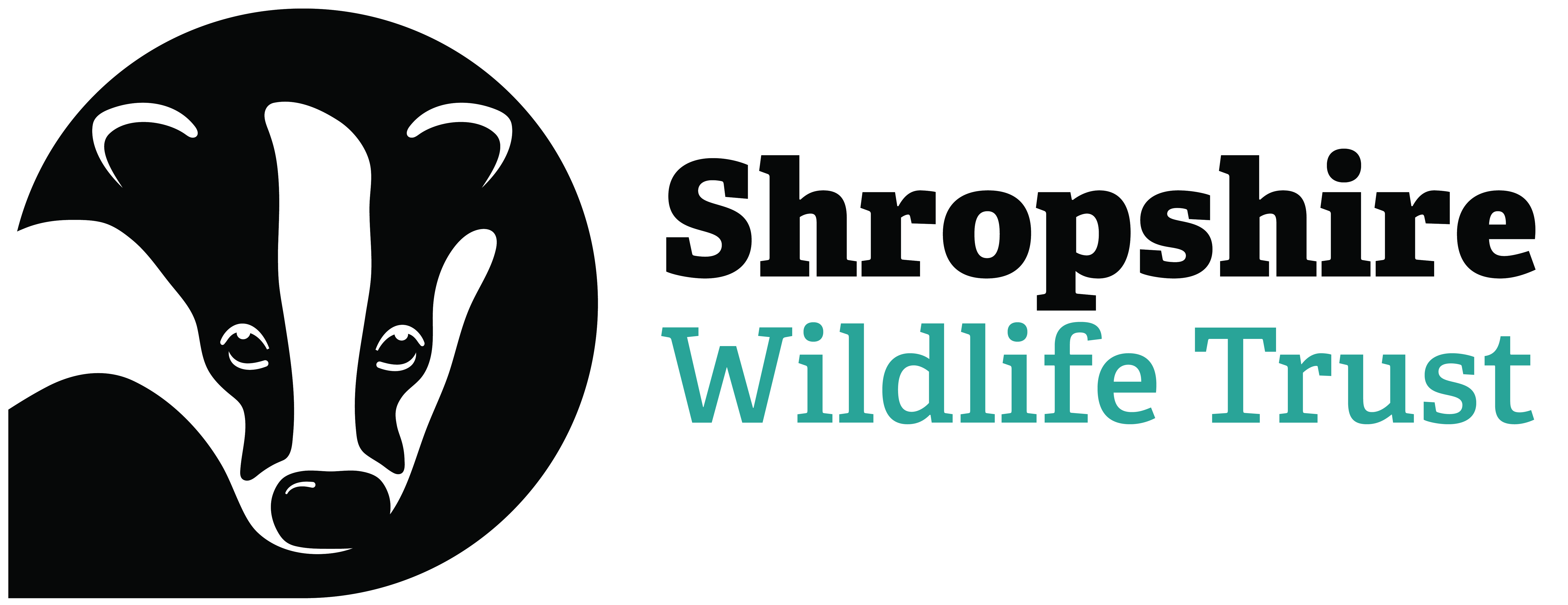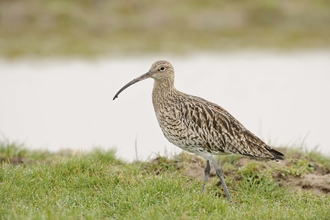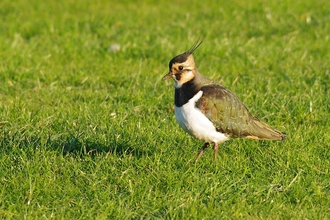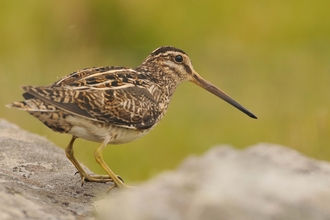Betchcott Hill Land Appeal
We're restoring Betchcott Hill
In November 2024 we launched our Betchcott Hill Land Appeal to fund the purchase and restoration of Betchcott Hill for nature.
Thanks to your incredibly generous support we raised over £160,000! Allowing us to not only secure Betchcott Hill but to do the vital work to restore it.
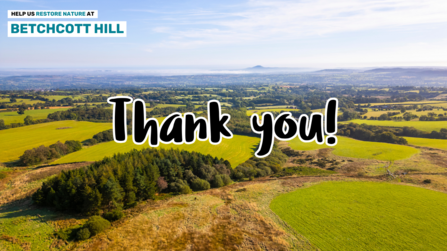
About Betchcott Hill
Nestled between the craggy outcrops of the Stiperstones ridge, and the imposing plateau of the Long Mynd, is a piece of land, 50 hectares in size. It neighbours the ancient Portway, and descends gradually to meet the rolling fields of the lowlands. Meadow pipits and skylarks flutter and parachute above, whilst a shy brown hare creeps through the grasses below, ears flat along its back, all as an unmistakable ‘cuckoo’ call drifts by on an upland breeze.
This is Betchcott Hill, a promising site, containing pockets of valuable habitat, and home to some specialist species, not least a breeding pair of curlew. But it is sadly in poor ecological condition, and in need of considered restoration and land management.
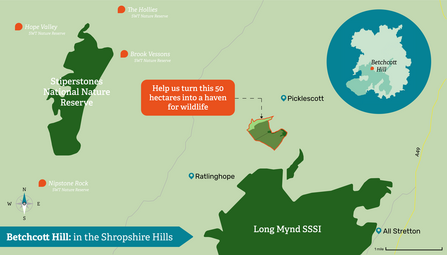
click to enlarge
Our plans for the land
Grassland
We want to enhance this habitat, making it a species-rich grassland. Through targeted conservation grazing and hay strewing, we aim to enhance the botanical diversity of the grassland and extend areas of heathland where possible.
Wetland
There are wet flushes on the site, which are perfect habitat for the resident wading birds. By blocking and filling the drainage ditches, we can expand this wetland, reinstating it for curlew and lapwing, as well as a variety of dragonflies and invertebrates.
Woodland
The on-site woodland area doesn’t require much intervention. We will carefully monitor what is happening in this woodland habitat, removing or planting trees when necessary to keep the balance.
The restoration work we plan to carry out here will create an important link in the chain of habitats found here in the Shropshire Hills.
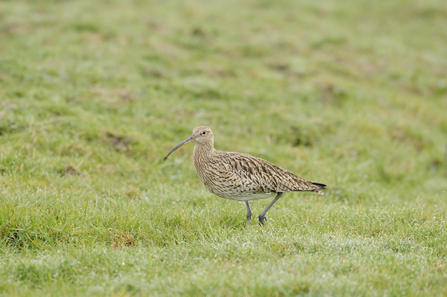
Curlew (c) Terry Whittaker / 2020VISION
A haven for wading birds
The site has great potential for wading birds, with lapwing and snipe already present. Curlews also visit, with a pair nesting on the site earlier this year. Tragically, the young were predated, a devastating but all too familiar blow for this near-threatened species. We intend to carefully manage the areas of woodland to help stop this predation, giving the curlew, and other ground-nesting birds, a fighting chance to fledge their chicks.
We will block the drainage systems that are present in order to expand the wet flushes and keep water on site longer. We’ll also be adding scrapes, shallow depressions made to hold rainwater into the warmer, summer months, which create important feeding sites for wading birds and their chicks. These changes to the land will make it wetter and better for the lapwing, snipe, and curlew.
